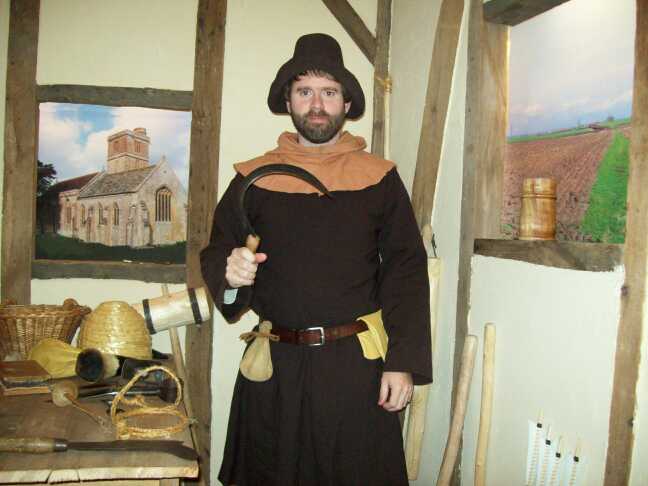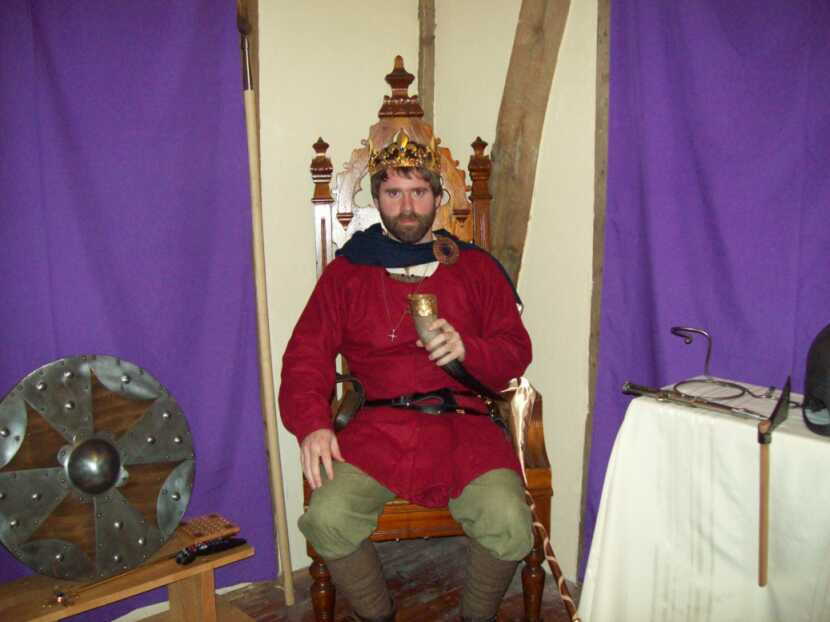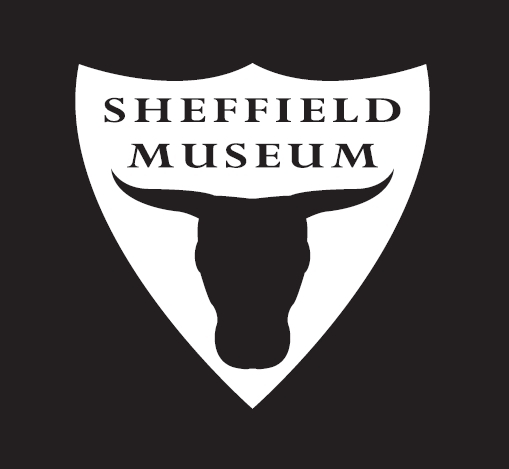Bring History To Life
With Guest Speakers
From The Past
Award Winning*
Travelling Elementary School Programs/Presentations
Brought Into Your Classroom
*Winner of the CILC Pinnacle Award from 2008-2020 based on teacher evaluations.
Traditional Canadian Music and Dance

Gr. 2 Social Studies
Students learn about traditional musical instruments and dancing brought to Canada by early immigrants from the British Isles. The fiddle, bagpipes, whistle, and accordion are demonstrated and the students participate in simple folk dancing.
Meet The Pioneer
Farmer
Invite a pioneer farmer into your classroom to talk to your
students about life as a settler. Students are encouraged to ask this
"first-person", costumed character questions. The pioneer will show them
some of his farm tools (including a replica flintlock musket), and teach
them a barn dance.
Choose between two real pioneers from the pages of history:
-Jacob Sipes grew up in the
Thirteen Colonies, but moved to Upper Canada as a result of the American
Revolution.
-Charles Ingalls was the famous
"Pa" of Laura Ingalls Wilder. He pioneered in 8 different states.
Also Available Via Live Videoconference (Zoom, etc.)

Pioneer Music and Dance
Students learn from a pioneer character about the traditional musical instruments, singing, and dancing enjoyed by settlers.
The fiddle, bagpipes, whistle, and accordion are demonstrated and the students participate in simple folk dancing.
Choose between two real pioneers from the pages of history:
-Jacob Sipes grew up in the Thirteen Colonies, but moved to Upper Canada as a result of the American Revolution.
-Charles Ingalls was the famous "Pa" of Laura Ingalls Wilder. He pioneered in 8 different states.
Also Available Via Live Videoconference (Zoom, etc.)
Pioneer Christmas
Visit with one of America's most famous settlers, Charles Ingalls (1836-1902), the inspiration for "Pa" in the popular books written by Laura Ingalls Wilder, and find out what a pioneer Christmas was all about through storytelling, singing, and dancing.
Also Available Via Live Videoconference (Zoom, etc.)

Music and Dance in
Medieval Times
Students learn from a "real" peasant character about the music and dance
that was popular amongst the medieval peasantry.
The fiddle, bagpipes, whistle, drum, and hurdy-gurdy are demonstrated, and the students learn simple dances from Medieval times, danced to live music.
Also
Available
Via Live Videoconference (Zoom,
etc.)
Talk to the peasant live from inside his home in the village of
Tintinhull. The home is an accurate reproduction of a medieval house
interior.
Meet The Medieval Peasant
Invite a medieval Peasant into your classroom to teach your students
about how 90% of the medieval population lived. Students are encouraged
to ask this “first-person” character lots of questions.
The Peasant
is prepared to discuss all facets of medieval life, such as the manor
system, agriculture, religion, daily life, gender roles, crime &
punishment, warfare, health, family life, social hierarchy, and
entertainment.
This is an opportunity to interview a person from the past (or the next best thing). The students and teacher direct the discussion through their questions. The Peasant will bring farm tools, weapons, and coins, and teach them a medieval dance with live music on the bagpipes.
The Peasant
is usually a farmer from the 1430s who fought against Joan of
Arc as a foot-soldier, but a peasant can be brought from other eras
to better suit your course of study, for example the Viking era or the
First Crusade. Also, the peasant could be based on one of the characters
from Chaucer's "Canterbury Tales", such as The Reeve, The Ploughman, or
The Franklin.
Also Available Via Live Videoconference (Zoom, etc.)
Talk to the peasant live from inside his home in the village of Tintinhull.The home is an accurate reproduction of a medieval house interior.
Medieval Peasant talking to students from Marty Pullin on Vimeo.
Bring one of history's most interesting monarchs into your classroom: King Alfred The Great. Alfred fought back from defeat to regain his kingdom from the Vikings, and he worked tirelessly to revitalize culture and learning in his realm.
Amongst other
topics, King Alfred can discuss kingship, law and order,
Viking warfare, daily life, and castles. In addition to showing artifacts
and answering questions, the students may try on an authentic Viking
helmet, and
King Alfred can teach the students a medieval
dance and play live music.
Also Available Via Live Videoconference (Zoom, etc.)
King Alfred the Great Speaking with Students from Marty Pullin on Vimeo.
Meet The Medieval Crusader
It is
estimated that close to 100,000 people left Europe to take part in
the First Crusade. Most of them were peasants, and most never
returned home. There were many subsequent crusades, but none could
claim the same degree of "success" as the First Crusade, which
achieved its objective of capturing Jerusalem.
The
character
for this session is a peasant, reflecting the often overlooked role
of peasants in medieval warfare. This crusader can discuss his
motivations for going on the journey, describe the journey itself,
recount the battles and sieges, and reflect on the aftermath.
He
is also prepared to discuss all facets of medieval life in order to
give an understanding of the background of the crusaders, such as
the manor system, agriculture, religion, daily life, gender roles,
crime & punishment, warfare, health, family life, social
hierarchy, and entertainment.
This is an opportunity to interview a person from the past (or the next best thing). The students and teacher direct the discussion through their questions. The peasant will have on hand farm tools, weapons, sports equipment, and coins, and can teach them a medieval dance with live music on the bagpipes.
Also Available Via Live Videoconference (Zoom, etc.)Meet The Loyalist
Soldier/Farmer
Invite a Loyalist veteran of the American Revolution and the War of 1812 into your classroom to talk to your students about life as an early American and Upper Canadian soldier and settler. This is an opportunity to interview a person from the past (or the next best thing). Students are encouraged to ask this “first-person” character questions. The Loyalist will show them some of his farm and army tools (including a replica flintlock musket), and teach them a barn dance with live fiddle music.
Also Available
Via Live Videoconference (Zoom,
etc.)
.
Meet The War of 1812 Militia Veteran
Invite
a
veteran of the War of 1812 militia into your classroom to talk to your students about life as an early Upper Canadian
soldier and settler, and the fight against the American invasions.
This is an opportunity to interview a person from the past (or the next best thing). Students are encouraged to ask this “first-person” character questions. The veteran will show them some of his farm and army tools (including a replica flintlock musket), and teach them a barn dance with live fiddle music.
Also Available Via Live Videoconference (Zoom, etc.)
An Interview With Benedict Arnold -
Hero or Traitor of the American Revolution?
Although his name became synonymous with traitor, Benedict Arnold believed himself to be a true Patriot to the end. Find out first-hand about his motives, experiences, and how his heroic actions saved the American Revolution.
By talking with Benedict Arnold, your students will broaden their perspective on the American Revolution, and gain a deeper understanding of the motivations, beliefs, and experiences of the participants.
Benedict Arnold is prepared to discuss (but is not limited to) the following topics:
-His childhood and education
-His experiences in the French and Indian War
-His career as a merchant and sea captain
-His role as a leader of the Sons of Liberty
-His numerous victories in battle against the British
-How the American Revolution went wrong
-Switching sides
-The Peace Treaty
-His life after the war
-The U.S.A. after the war
Benedict Arnold will also have various artifacts on hand, including a British musket, a flintlock pistol, and colonial coins and paper money.
Also Available Via Live Videoconference (Zoom, etc.)
Folk Dancing
Students are taught simple folk dances from the British Isles, and then dance them to live traditional folk music. (May also include a brief demonstration of the fiddle and bagpipes.)
Booking Details
Schedule
- Sheffield Museum school programmes can be brought into your school on Mondays, Tuesdays Thursdays, and Fridays.
-
Presentations run between 60-75 minutes. Multiple programs can be presented in one day, depending on your schedule.
Requirements for
Dancing
- Students are divided into groups of about 10. For younger grades (below Grade 4) a responsible supervisor (teacher, parent, etc.) is needed to assist each group.
-
Normally, a gymnasium or other large space is best for presentations with dancing. If such a space is not available, a spacious classroom may suffice, the dancing may be left out, or it can be done outdoors in good weather.
Travelling To Your School
- For each class of up to approximately 30 students: $150
- For groups larger than 30: $5 per student.
- A travel charge of $15 for schools within 30 minute drive; proportionately more for those further away
- HST will be added to the total.


